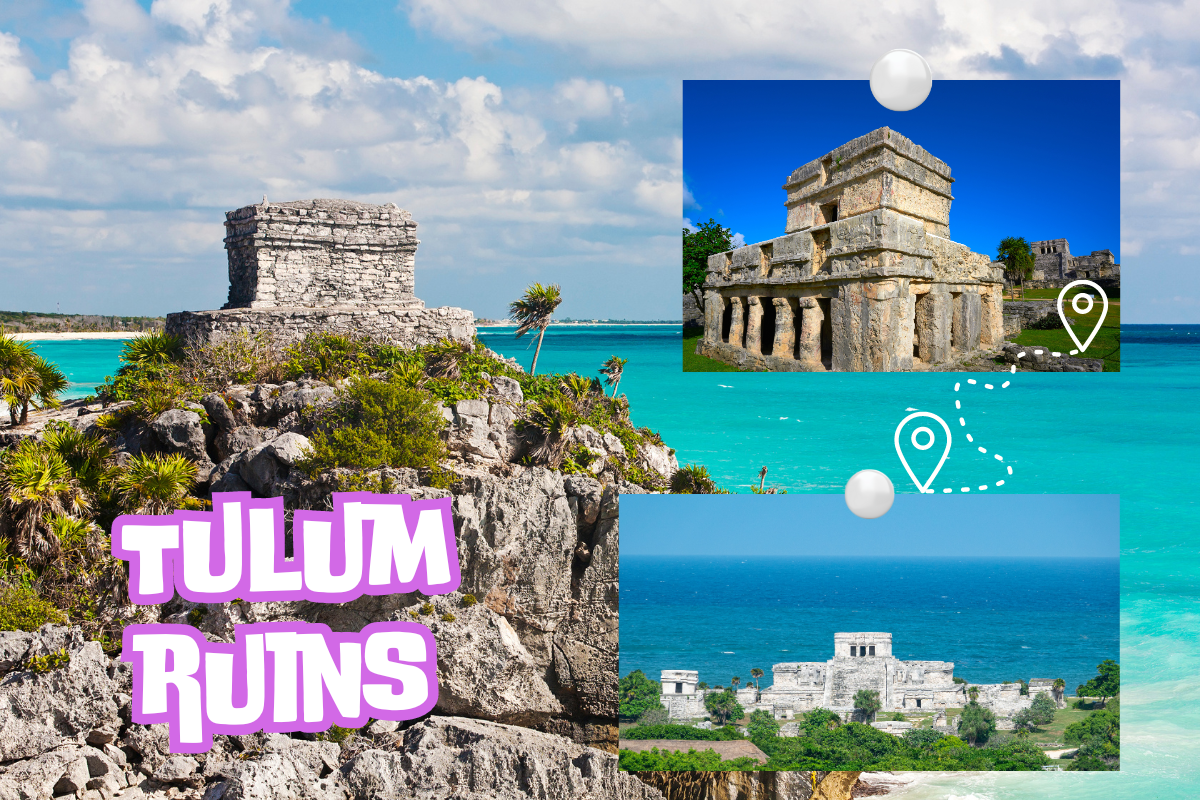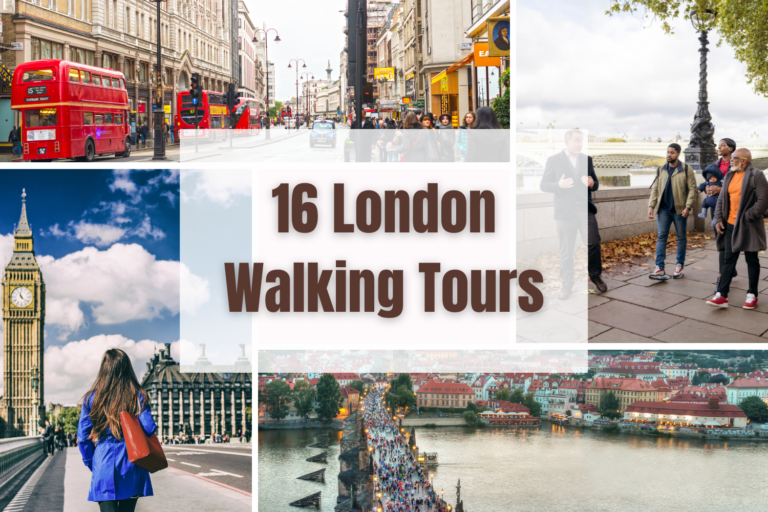Tulum Ruins: Where History Meets The Sea
Tulum, located on the eastern coast of the Yucatán Peninsula in Mexico, was originally known as “Zama,” meaning “The City of Dawn“, because it faces the sunrise. Its development dates back to the Late Postclassic period of the Mayan civilization.
The site was strategically chosen for its coastal position, which provided natural defense and facilitated maritime trade. Tulum’s high cliffs and surrounding walls made it a fortress, protecting it from invasions and rival cities.
The arrival of the Spanish conquistadors marked the beginning of Tulum’s decline. The combination of disease, warfare, and disruption of trade networks led to its abandonment.
How were Tulum Ruins Formed?
The Tulum ruins were formed around 1200 to 1450 AD, as a part of the Mayan civilization’s expansion and development. The Mayans chose this location for its natural defensive advantages and suitability as a major port for maritime trade.
The city was strategically built on a limestone cliff along the eastern coast of the Yucatán Peninsula, overlooking the Caribbean Sea.
The city was enclosed by a wall, which provided protection against invaders and demarcated the sacred area from the surrounding region.
Over time, Tulum became an important trading hub, connecting the Mayan civilization with other cultures through extensive trade networks. The ruins reflect the city’s historical significance, architectural ingenuity, and the Mayans’ adaptation to their coastal environment.
Places To Visit at Tulum Ruins
1. El Castillo
El Castillo, or The Castle, is the tallest and most iconic structure at Tulum. It was built on a 12-metre-high cliff facing the Caribbean Sea, which provided both a strategic military advantage and an impressive viewpoint for ancient Mayans.
El Castillo is one of the most important buildings at Tulum due to its multifaceted role in the city’s defense, navigation, and religious activities.
Activity To Do- Climb to the top for panoramic views, take photographs and learn about its historical significance.
2. Great Palace
The Great Palace, also known as the “House of the Columns,” is one of the largest and most complex structures at Tulum. The Palace showcases the architectural sophistication of the Mayans, with its well-planned layout and construction techniques.
It served as the residence for Tulum’s elite and possibly for administrative purposes. The palace is notable for its expansive size, multiple rooms, and columns that support the roof.
Activity To Do – Explore the palace’s rooms and courtyards, observe the intricate architectural details, and imagine life in ancient Tulum.
3. Temple of Frescoes
The Temple of Frescoes is a well-preserved structure known for it’s detailed murals depicting Mayan deities, cosmological themes, and everyday life. The temple consists of a lower gallery and an upper temple, with elaborate stucco work adorning its façade.
This temple was used for religious and ceremonial purposes, serving as an observatory for tracking the movements of the sun.
Activity To Do – Examine the detailed frescoes, learn about Mayan cosmology and rituals, and appreciate the artistic craftsmanship.
4. Temple of Wind God
The temple is dedicated to the Mayan god of wind, known as Ehecatl, and is strategically located near the edge of the cliff to harness the sea breezes. The Temple of the Wind God is a smaller, but equally fascinating structure within the Tulum Ruins.
Its location and and design reflect the importance of wind in Mayan cosmology and daily life. The Temple showcases the Mayans’ reverence for natural elements and their integration of religious structures with the natural environment
Activity To Do – Learn about the Mayan religion and observe the temple’s design. Stand near the temple and experience the strong sea breezes that inspired its dedication to the wind god.
5. Temple of The Descending God
The Temple of the Descending God, one of the key structures at the Tulum ruins, is renowned for its unique and intriguing iconography. Located near the entrance of Tulum, this temple gets its name from depicting a deity in a descending pose, a figure uncommon in Mayan art.
The temple’s proximity to other significant structures like El Castillo and the Temple of the Frescoes makes it an integral part of the Tulum archaeological experience.
The carvings and the temple’s position within the walled city offer a glimpse into the Mayans’ spiritual life and artistic expression. The temple is relatively small and features a single room with a narrow entrance and a flat roof.
Activity To Do – Join a guided tour to learn about the history, capture stunning photos of the temple and its intricate carvings, and observe the Mayans’ architectural details and construction techniques.
6. Take Guided Tours
Guided tours at Tulum Ruins provide an informative and enriching experience, offering insights into the history, architecture, and culture of the Mayan civilization. Professional guides, often with a deep knowledge of Mayan history, lead these tours.
These tours help visitors understand the significance of the Tulum Ruins within the context of Mayan civilization and its impact on the region’s history.
Activity To Do – Ask questions and learn from the experts about the site’s history, architecture, and cultural significance.
7. Visit the Beach
The beaches at Tulum were integral to the city’s role as a major port for maritime trade. They provided access to the sea for trading canoes and served as a natural harbor for the Mayans.
The beach is directly below the cliff where the ruins stand, offering a picturesque and serene environment for relaxation and exploration.
Activity To Do – Swiming in the Caribbean Sea, sunbathing on the sand, exploring the shoreline, and relaxing are some of the most common activities to do at the beach of Tulum Ruins.
Tips For Visting
Visiting the Tulum ruins can be a memorable experience if you plan accordingly. Here are some tips to help you make the most of your visit:
1. Best Time to Visit
- Early morning or late afternoon – Arriving early or later in the afternoon helps you avoid the peak heat and the largest crowds.
- Off-season – Visiting during the off-season (typically May to October) can also result in fewer tourists, although be prepared for potential rain.
2. What to Bring
- Water – Stay hydrated by bringing plenty of water, as it can get very hot.
- Sun protection – Wear sunscreen, a hat, and sunglasses to protect yourself from the strong sun.
- Snacks – Light snacks can help keep your energy up, especially if you plan to spend a few hours exploring.
- Comfortable Footwear – Wear comfortable walking shoes, as the terrain can be uneven.
3. Facilities and Services
- Restrooms – Use the restrooms at the entrance before entering the site, as facilities inside the ruins are limited.
- Parking – If you’re driving, there is a parking lot near the entrance, but it can fill up quickly, so arrive early.
- Food and Souvenirs – There are vendors and shops near the entrance where you can buy food, drinks, and souvenirs.
4. Health and Safety
- Stay Hydrated – Drink plenty of water to avoid dehydration in the hot climate.
- Watch Your Step – Be mindful of uneven ground and steps within the ruins to avoid tripping or falling.
- Insect Repellent – Consider bringing insect repellent, especially during the wetter months.
Activities To Do Near Tulum Ruins
1. Visit the Tulum Pueblo ( Town )
The town of Tulum, also known as Tulum Pueblo, is a vibrant area that blends local culture with modern amenities. Here, visitors can stroll through charming streets lined with colorful murals, artisanal shops, and a variety of dining options.
The town also hosts several cultural events and markets where you can purchase handmade crafts and souvenirs, giving you a taste of the local lifestyle.
2. Explore the Cenotes
Cenotes are natural sinkholes filled with freshwater, and the Tulum area is renowned for them. These cenotes offer a unique swimming and snorkeling experience, allowing visitors to explore crystal-clear waters and underwater caves.
Each cenote has its distinct features, such as stalactites, stalagmites, and diverse aquatic life, making them a must-visit for nature lovers and adventure seekers.
Some of the most famous cenotes near Tulum are Gran Cenote, Dos Ojos, and Cenote Calavera.
3. Tulum’s Art and Culture
Tulum has a thriving art and culture scene that reflects its bohemian spirit. Visitors can explore numerous art galleries showcasing works by local and international artists.
The town is also known for its street art, with murals that add color and character to the streets. Cultural events, such as music festivals, art shows, and traditional Mayan performances, are frequently held, providing a deeper insight into the region’s heritage.
These activities, combined with the historical allure of the Tulum Ruins, make the area a diverse and enriching destination for travelers.
How To Reach Tulum Ruins
Visiting the Tulum ruins is a must for anyone exploring the Riviera Maya. Known for its stunning cliffside location and well-preserved Mayan architecture, the ruins attract visitors from all over.
There are several convenient ways to reach the historic site of Tulum ruins. Here are some of the most common places from where visitors travel
1. From Cancun
- Distance – 130 Kilometres
- Time – Approximately 1.5 to 2 hours
- Mode of Transportation – By car, bus, or shuttle.
2. From Playa del Carmen
- Distance – 65 kilometres
- Time – Approximately 1 hour
- Mode of Transportation – By car, bus, or shared minivans.
3. From Tulum Town
- Distance – Around 3-4 Kilometres
- Time – 10 minutes
- Mode of Transportation – By car, bicycle, walking, or taxi.
4. From Akumal
- Distance – 25 Kilometres
- Time – Approximately 30-35 minutes
- Mode of Transportation – By car or shared minivans.
FAQs
What is Special About Tulum Ruins?
The Tulum ruins are special because they are one of the few walled Mayan cities and are uniquely situated on a cliff overlooking the Caribbean Sea. The site showcases the Mayan civilization’s architectural and cultural brilliance.
Why is Tulum So famous?
Tulum is a famous coastal destination as its unique combination of historical significance, natural beauty, and eco-friendly tourism makes it a popular destination for travelers worldwide.
Is it Free To Visit the Tulum Ruins?
No, visiting Tulum Ruins is not free. There is an entrance fee of 85 Mexican pesos ( approximately 4-5 USD). Additional fees may apply for parking or guided tours.







